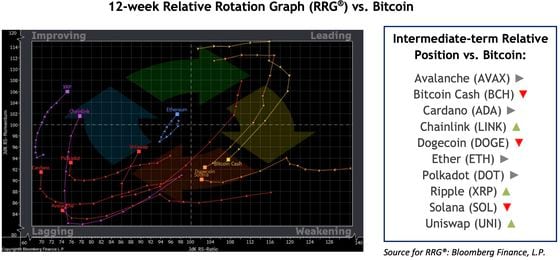The cosmos ecosystem has been somewhat dormant over the past couple of years since its launch. However, Cosmos 2.0 is about to change the game, following the recent announcement of the newly revamped whitepaper with many proposals. Arguably, the cosmos platform hasn’t had unique features that set it apart.
The Cosmos hub is the blockchain that represents the backbone of the entire cosmos blockchain network, and it serves as a significant pillar to other projects built within the ecosystem; however, it is proper to say that, The Hub hasn’t offered any real-world value to its users, and the Cosmos team is looking to change that.
According to the revamped white paper, cosmos 2.0, the platform seeks to increase utility and transition the Hub from being a mere template that helps build other blockchains into the cosmos interchain.
Cosmos 2.0 seeks to change the dynamics, not only for the blockchains within the ecosystem but also for the ATOM token. In the proposal, the platform aims to achieve the unity of blockchains within its ecosystem to achieve interchain security and alter the issuance process of ATOM tokens.
Cosmos 2.0; the proposition for interchain security
Interchain security is a solid proposal from the cosmos team that will significantly uplift the security features of other blockchains within the ecosystem. Ideally, new blockchain projects are often less secure and consequently prone to cyber attacks that could lead to massive losses.
The Cosmos hub is essentially the most robust blockchain within the ecosystem, with significant security due to its robust group of validators. The Cosmos chains are all under the Proof of Stake consensus; therefore, they rely on validators for security.
The Hub, being the first blockchain on the Cosmos ecosystem, has a large divest pool of validators, making it the most secure network on the platform. The new proposal suggests that the Hub share its validators with other cosmos chains to allow interchain security. The feature will uplift the initial challenges of new chains finding their own validators within the ecosystem, often making them vulnerable to attacks.
The introduction of interchain security does not only unite blockchains; it also provides an avenue to deploy defensively decentralized applications within the ecosystem.
Cosmos 2.0; impact on ATOM
The cosmos 2.0 proposal will also impact the ATOM token, which is the native digital token within the Cosmos ecosystem. The newly proposed redistribution model will ensure the value of ATOM increases by leveraging liquid staking and tying its value to the interchain security model.
The ATOM token will be the native means for other ecosystems and users to borrow security features such as validators within the Cosmos ecosystem. The approach gives real value to the ATOM token, increasing its demand.
Similarly, through leveraging liquidity staking, ATOM holders will have the opportunity to lock up their digital assets with the validators. In return, these assets will accrue interests as they are used for liquidity staking, ensuring the value of the ATOM token grows.
Ideally, the Cosmos 2.0 whitepaper proposal will disrupt the ecosystem, a huge step from the relatively conservative nature of the platform and the ecosystem at large.





